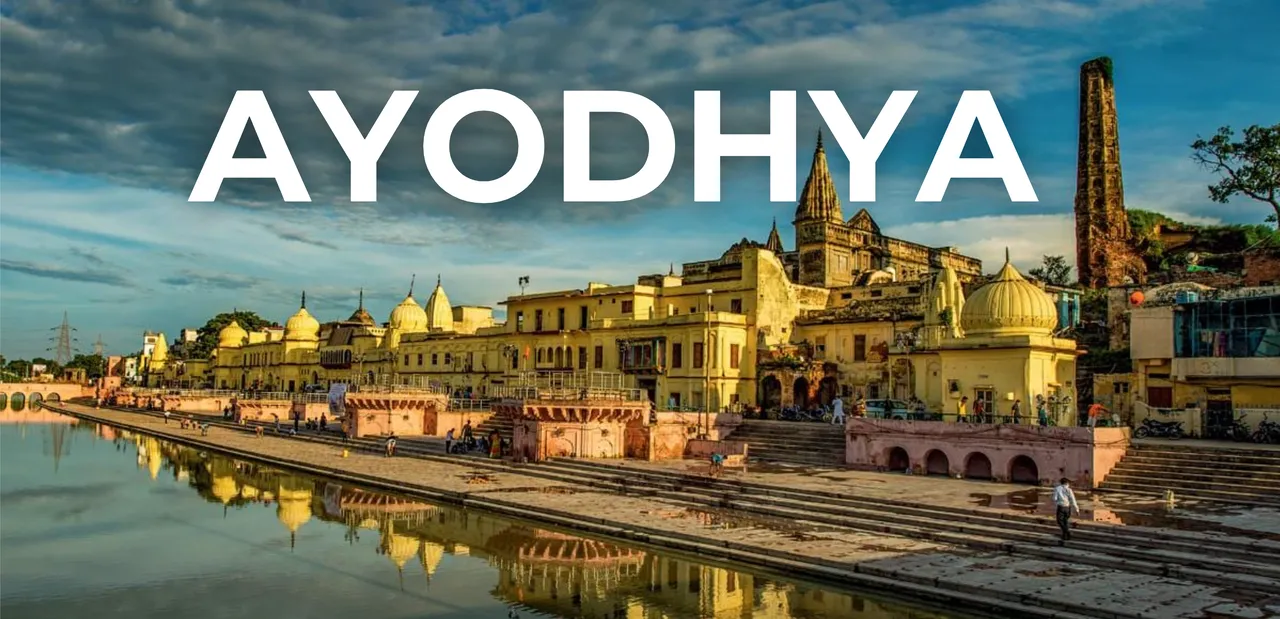Ayodhya, one of the most ancient and revered cities in India, is closely associated with the epic Ramayana and is the birthplace of Lord Ram. This historic city, with its deep spiritual and cultural significance, is also blessed with several rivers that not only enhance its natural beauty but also hold immense religious importance. Here, we explore the top 10 rivers in and around Ayodhya, especially near the sacred Ram Mandir.
Sarayu River
The Sarayu River is perhaps the most prominent river in Ayodhya. Flowing through the heart of the city, it holds immense religious significance as it is closely associated with Lord Ram. Devotees believe that taking a dip in the holy waters of the Sarayu can cleanse them of their sins. The riverbanks are often bustling with pilgrims performing rituals and taking part in the evening aarti, making it a vibrant spot in the city.
- The Sarayu River is the most prominent river in Ayodhya.
- Flowing through the city’s heart, it holds immense religious significance.
- The river is closely associated with Lord Ram.
- Devotees believe that a dip in the Sarayu’s holy waters can cleanse sins.
Ghaghra River
A tributary of the Ganges, the Ghaghra River is another important water body near Ayodhya. Known locally as the Ghaghara, this river is significant for both its religious connotations and its contribution to the region’s agriculture. The river supports a variety of crops and is a lifeline for the local farmers. Additionally, it serves as a scenic backdrop for many religious activities.
- The Ghaghra River, a tributary of the Ganges, flows near Ayodhya.
- Locally known as the Ghaghara, it holds significant religious value.
- The river greatly contributes to the region’s agriculture.
- Farmers rely on the Ghaghra for irrigation and crop growth.
Tamsa River
The Tamsa River, also known as the Tamasa, is mentioned in the Ramayana. It is believed that Lord Ram, along with Sita and Lakshman, crossed this river during their exile. The Tamsa’s tranquil waters and lush surroundings offer a peaceful retreat for those looking to connect with nature and spirituality.
- The Tamsa River, also called the Tamasa, is historically significant.
- It is notably mentioned in the ancient Indian epic, the Ramayana.
- According to the epic, Lord Ram, Sita, and Lakshman crossed this river during their exile.
- The crossing of the Tamsa River marks an important event in their journey.
Gomti River
While the Gomti River does not flow directly through Ayodhya, it is an important river in the surrounding region. It is a tributary of the Ganges and is revered in Hindu mythology. The river’s clear waters and the fertile land it nourishes make it vital for the local ecosystem and agriculture.
- The Gomti River, although not directly flowing through Ayodhya, plays a significant role in the nearby region.
- As a tributary of the Ganges, it holds considerable religious importance in Hindu mythology.
- The river is celebrated for its clear waters, contributing to its revered status.
- The Gomti nourishes fertile lands, which are crucial for the local ecosystem.
Rapti River
The Rapti River flows through the eastern part of Uttar Pradesh and is another significant river near Ayodhya. It is known for its unpredictable nature, often flooding during the monsoon season. Despite this, the Rapti is crucial for irrigation and supports a diverse range of wildlife and plant species in its basin.
- The Rapti River flows through the eastern part of Uttar Pradesh, near Ayodhya.
- Known for its unpredictable nature, it often floods during the monsoon season.
- Despite its unpredictability, the Rapti is crucial for irrigation in the region.
- It supports a diverse range of wildlife, contributing to local biodiversity.
Choti Sarayu River
The Choti Sarayu is a smaller tributary of the Sarayu River. It is significant for its proximity to various historical and religious sites in Ayodhya. The river’s gentle flow and scenic beauty make it a favorite spot for locals and visitors alike, providing a serene environment for reflection and meditation.
- The Choti Sarayu is a smaller tributary of the Sarayu River.
- It holds significance due to its proximity to various historical sites in Ayodhya.
- The river is also close to many religious sites in the region.
- The gentle flow of the Choti Sarayu adds to its scenic beauty.
Manorama River
The Manorama River is another river of note near Ayodhya. It is smaller than the Sarayu and Ghaghra but holds its own religious importance. The river is often mentioned in local folklore and religious texts, adding to the spiritual landscape of the region.
- The Manorama River is situated near Ayodhya, known for its smaller size compared to the Sarayu and Ghaghra rivers.
- Despite its smaller size, the Manorama River holds significant religious importance in the region.
- The river is frequently mentioned in local folklore, contributing to its cultural significance.
- Religious texts often reference the Manorama River, enhancing its spiritual value.
Kuwana River
Flowing through the plains of Uttar Pradesh, the Kuwana River is a lesser-known river near Ayodhya. It contributes to the area’s irrigation and supports local agriculture. Though not as famous as the Sarayu, the Kuwana plays a vital role in the daily lives of the people living in its basin.
- Flowing through the plains of Uttar Pradesh, the Kuwana River is a lesser-known waterway.
- It is located near the historic city of Ayodhya.
- The river significantly contributes to the area’s irrigation needs.
- Supporting local agriculture, the Kuwana ensures fertile fields and abundant crops.
Rohini River
The Rohini River, also called Rohini Khurd, is a minor river in the region. It merges with the larger rivers and contributes to the overall water system that supports Ayodhya and its surroundings. The river is significant for its historical mentions and the lush green landscapes it nurtures.
- The Rohini River, also known as Rohini Khurd, is a minor yet significant river in its region.
- This river merges with larger rivers, enhancing the overall water system.
- It plays a crucial role in supporting Ayodhya and its surrounding areas.
- The Rohini River is historically significant, mentioned in various texts.
Bhagmati River
The Bhagmati River is another river that is part of the extensive river network near Ayodhya. It is a tributary that supports local agriculture and adds to the region’s biodiversity. The river’s calm and serene flow is perfect for those looking to escape the hustle and bustle of city life and immerse themselves in nature.
The rivers in and around Ayodhya are not just natural resources but are deeply intertwined with the city’s spiritual and cultural fabric. They play a crucial role in the religious practices, agriculture, and overall lifestyle of the region. The Sarayu River, in particular, stands out for its profound connection to Lord Ram and the Ramayana, making it a central part of Ayodhya’s identity. As you explore these rivers, you will not only witness the natural beauty but also feel the rich history and spirituality that define Ayodhya.
Ayodhya, a city steeped in spiritual significance and ancient history, is blessed with several magnificent rivers that enhance its beauty and sanctity. The most prominent among these is the Sarayu River, which holds immense religious importance as it is closely associated with Lord Ram. Pilgrims from across the country visit the Sarayu to take a holy dip, believing it purifies the soul and washes away sins.
Another notable river is the Ghaghra, a tributary of the Ganges, which adds to the city’s spiritual ambience. Flowing serenely, the Ghaghra River is a sight to behold, especially during the monsoon season when it swells with life and vitality. The Tamsa River, also known as the Tons, carries with it tales from the Ramayana. It is believed that Lord Ram crossed this river during his exile, making it a site of great historical and religious importance.
The Gomti River, though not flowing directly through Ayodhya, is still significant to the region. It is revered in Hindu mythology and is known for its calm and pristine waters. Lastly, the Rapti River, known for its picturesque beauty, flows through the region, adding to Ayodhya’s natural charm. If you have visited any of these rivers, we invite you to share your experiences and thoughts in the comments. Your stories and insights could provide valuable perspectives for others planning a visit.
Beyond the rivers, Ayodhya’s roads, though a mix of modern and traditional, offer a glimpse into the city’s evolving infrastructure. The roads leading to the Ram Mandir are well-maintained, catering to the influx of devotees. What are your thoughts on Ayodhya’s roads and its many temples? Share your stories and opinions about this sacred city and its timeless tales.

